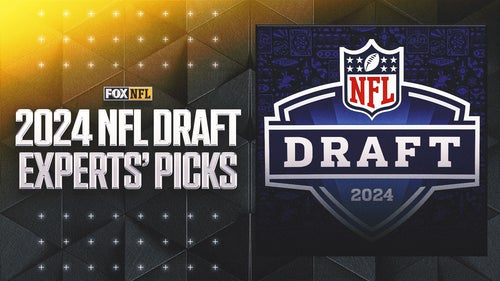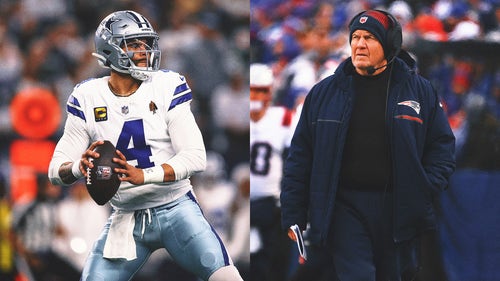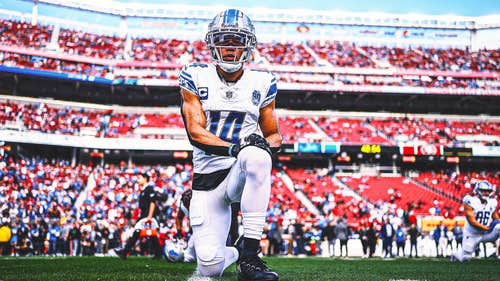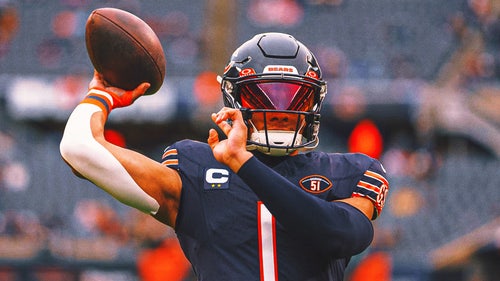
Grades from the Week 6 loss to the Titans
Oct 16, 2016; Nashville, TN, USA; Cleveland Browns quarterback Cody Kessler (6) passes against the Tennessee Titans during the second half at Nissan Stadium. Tennessee won 28-26. Mandatory Credit: Jim Brown-USA TODAY Sports
A frantic comeback attempt by the Cleveland Browns came up just short in their 28-26 loss to the Tennessee Titans on Sunday afternoon. Even though the team made a herculean effort to make the score close, they clearly got themselves into too deep of a hole which they could not have possibly climbed out of.
Cleveland seemed to be giving it their all, yet doing everything in their power to lose the game all at the same time. This is mostly due to eleven penalties on the afternoon, a season high. But field-position, a lack of balance in play calling, and an overall failure to get the offense moving in the third quarter put the game truly out of reach when it mattered.
As a result, the Browns have started the season winless, and through six games, concern is mounting over whether this team will lose all 16 contests this season. While it still seems unlikely, it would be best to address this by getting in the win column sooner rather than later.
The first step to turning the team’s fortunes around is by analyzing what went right and what went wrong in Sunday’s loss. The following is this week’s report card for each of the Browns’ major position groups.
Oct 16, 2016; Nashville, TN, USA; Cleveland Browns quarterback Cody Kessler (6) makes the call front he line against the Tennessee Titans during the second half at Nissan Stadium. Tennessee won 28-26. Mandatory Credit: Jim Brown-USA TODAY Sports
Quarterback: B
Cody Kessler is one of the very few bright spots of this game. He proved that he is making strides by putting up respectable stats, including 336 passing yards and two touchdown passes. In fact, Kessler was so effective at the position in the first half and the fourth quarter that Cleveland only ran one play with makeshift quarterback Terrelle Pryor taking the snap. This is Pryor’s lowest total of plays as the quarterback since Kessler took over the starting job in the third week of the season.
Even more revealing than the stats on the surface as to how the rookie played is the grit and durability he showed from the very beginning to the very end of the contest. The six sacks the former USC Trojan took were not even a full representation of how many hits the quarterback took.
In this same vain, Kessler’s mobility, a trait which he is not known for, was also on display. Rolling out to the right was an every-play occurrence due to the lack of pocket protection all afternoon long. Kessler showed that he does have the ability to make throws on the run, and step into them even when he knows a crushing hit is on the way. Most of all, Kessler managed to weather an otherwise raging storm, and avoided turning the ball over in the midst of it all.
Oct 16, 2016; Nashville, TN, USA; Cleveland Browns running back Isaiah Crowell (34) runs past a tackle attempt by Tennessee Titans linebacker Avery Williamson (54) in the first half at Nissan Stadium. Mandatory Credit: Christopher Hanewinckel-USA TODAY Sports
Running Backs: F
It has been a roller coaster ride thus far for Cleveland running backs in 2016. Unfortunately, this week’s game against the Titans represented the lowest of the lows, even following last week’s miserable performance.
The offensive line struggled so much with run blocking that the Browns virtually abandoned the running game altogether, handing the ball to a running back just 13 times. Isaiah Crowell earned the most carries, but the fewest yards, as he ran for 16 on nine carries. Duke Johnson didn’t fare much better, running for 18 yards on four carries and a touchdown run, deceiving stats as three of the carries came in garbage time.
The sad reality is that the running backs will always get too much credit when the offense is working well, and too much blame when it isn’t. This is one instance in which not all the blame placed on them is necessarily deserved. With that said though, this unit did absolutely nothing to help the struggling offensive line, and failed to show that they deserve to avoid a failing grade.
Oct 16, 2016; Nashville, TN, USA; Tennessee Titans strong safety Daimion Stafford (24) and Titans cornerback Jason McCourty (30) attempt to defend against a pass caught by Cleveland Browns wide receiver Terrelle Pryor (11) during the second half at Nissan Stadium. Tennessee won 28-26. Mandatory Credit: Jim Brown-USA TODAY Sports
Wide Receivers: F
For a Browns offense who appears to pride themselves in the passing game, they sure don’t have many potent threats at the receiver position. Cleveland threw the ball 42 times, and managed 337 yards through the air. However, the play of the receivers only hindered the offense’s ability to put up more yards and points.
Terrelle Pryor was the one bright spot, of course, as he continues to be an efficient threat at the position he converted to. Pryor caught two touchdown passes, and finished the day with nine receptions for 75 yards. The sure handed playmaking threat is establishing himself as the team’s next Josh Gordon. Unfortunately, he seems like the only one on the field.
Rookie Ricardo Louis played a lot in Sunday’s game, and put up the second-most receiving yards with 65. But three costly drops and the inability to haul in the two-point conversion attempt made the play of the rookie out of Auburn all for naught.
Mostly, Cleveland’s passing game was much too predictable. Only four receivers even had receptions, the only other two being Rashard Higgins and Andrew Hawkins, who combined for just four catches. In a game where the Browns are extremely pass-heavy, this lack of balance is never going to get it done.
Oct 16, 2016; Nashville, TN, USA; Tennessee Titans linebacker Derrick Morgan (91) applies defensive pressure on Cleveland Browns quarterback Cody Kessler (6) in the second half at Nissan Stadium. Tennessee won 28-26. Mandatory Credit: Christopher Hanewinckel-USA TODAY Sports
Offensive Line: F
The play of the offensive line needs to be explained no further than the lack of running game, and the six sacks they allowed. The inability to create holes for running backs as well as pass block stagnated the Cleveland offense in a way which made sustaining drives impossible.
The running game only averaged 2.7 yards per carry, forcing the Browns into too many predictable passing situations. Then, Kessler was forced out of the pocket on almost half of his dropbacks, a ridiculous stat. Coming in, the Titans were hoping to make the Browns’ offense one-dimensional. But thanks to the play of the offensive line, the Browns had no real dimensions to their offense.
Returning from injury, center Cameron Erving had the worst game of his career. Granted, he may have been playing somewhat hurt, but the anchor of this offensive line was manhandled on both running and passing plays. Not to go too far into the past, but Erving’s play on Sunday made some Browns fans do a double take on whether or not the Florida State product was truly drafted in the first round.
In addition to all of this failure, this critical unit committed far too many penalties. From several false starts, to a holding, to a face mask, to a delay of game, the line was in on a lot of mishaps. The result of this was long situations in second and third downs, partially accounting for Cleveland’s low 3-14 third-down conversion rate.
Oct 16, 2016; Nashville, TN, USA; Cleveland Browns tight end Gary Barnidge (82) is tackled by Tennessee Titans inside linebacker Avery Williamson (54) during the first half at Nissan Stadium. Mandatory Credit: Jim Brown-USA TODAY Sports
Tight Ends: D
In a game which every position group seemed to have a major impact on the eventual outcome, the tight ends are the one exception. Even in an offense which likes to use two tight ends, these players mostly just blocked, and didn’t surrender devastating plays.
At the same time, they also failed to make any positive contributions to the victory effort. The running game could not get going when backs bounced outside, partially the responsibility of the tight ends who were supposed to be sealing the edge. Therefore, this unit did little more than take up space on the field and serve as one or two of the offense’s eleven players.
Through the air, Gary Barnidge made three big catches which totaled 59 yards. However, he did drop a ball and missed another which was catchable. Connor Hamlett also made an appearance in the game, but only blocked. All in all, to give the best description on the play of the tight ends against the Titans, they were virtually irrelevant.
Oct 16, 2016; Nashville, TN, USA; Tennessee Titans running back DeMarco Murray (29) runs for a short gain in the first half against the Cleveland Browns at Nissan Stadium. Mandatory Credit: Christopher Hanewinckel-USA TODAY Sports
Defensive Line: B
After all of the disappointment surrounding the Browns’ loss to the Titans on Sunday, one thing is still for certain: Cleveland’s front-three are going to come to play every single week.
Facing one of the best running backs in the league, the defensive line forced the Titans into numerous long passing situations. DeMarco Murray was shut down for most of the game, even though he did score a touchdown which virtually put the Browns away. Possibly more impressive though was how the Browns made Murray the only real threat running the ball, as last year’s Heisman Trophy winner, Derrick Henry, was a non factor.
Not only did the defensive line make matters difficult for Tennessee’s running game, they also did what they could defending the pass. While they only got to Titans’ quarterback Marcus Mariota two times, they put relentless pressure on him to force him out of the pocket on numerous additional instances.
In this effort, Danny Shelton was leading the charge with five tackles and one sack. Jamie Meder and Cam Johnson were also factors, slowly making names for themselves on a defense that has really struggled so far. Overall, it was a strong effort for the defensive line, an encouraging performance which can hopefully be built upon.
Oct 16, 2016; Nashville, TN, USA; Tennessee Titans quarterback Marcus Mariota (8) carries the ball in the first quarter against the Cleveland Browns at Nissan Stadium. Mandatory Credit: Jim Brown-USA TODAY Sports
Linebackers: C
In some aspects of the game, the linebackers were very strong on Sunday afternoon. But at the same time, they clearly have a long way to go both physically and mentally before they can be considered an elite group.
First, the positives. The linebackers helped out very successfully in the effort to make Tennessee’s offense one-dimensional. They stopped the run when called upon, and forced the Titans into third-and-long situations. While Tennessee was persistent in their running game, Cleveland’s front seven was persistent in making sure it wasn’t a significant factor in the game.
Of course, there is more to the game than this though. The most glaring error the linebackers made in this game was their inability to contain Mariota in the pocket. On the very first offensive play, for example, the dual threat quarterback scrambled for 41 yards. In total, the former Oregon Duck rushed for 64 yards, a yard short of equaling the total of Tennessee’s leading rusher. The concept of keeping a balanced defense which doesn’t allow the quarterback to get far when scrambling outside of the pocket is a simple one, but it is one that the Browns don’t seem to understand.
Once again, Christian Kirksey and Demario Davis led the way for this unit. They even played fairly well in coverage. But their few mistakes puts a damper on an otherwise solid performance, and they end up with an average grade.
Oct 16, 2016; Nashville, TN, USA; Tennessee Titans receiver Kendall Wright (13) stretches for a first down in the first half against the Cleveland Browns at Nissan Stadium. Mandatory Credit: Christopher Hanewinckel-USA TODAY Sports
Secondary: F
It really isn’t fair to call out individual players in Cleveland’s secondary for performing miserably when in reality, they really don’t have a chance. Without Joe Haden, the secondary is completely depleted. To make matters worse, they lost veteran safety Jordan Poyer to an injury as he was the victim of an unnecessary vicious hit while on punt return coverage.
Still, the Browns went with what they had, and did their best, but were gashed. The likes of Kendall Wright, Rishard Matthews, and Philip Supernaw became the beneficiary of an incredibly weak Cleveland secondary.
The lone bright spot was the only turnover forced by either team in the game; an interception by Tramon Williams. The play was significant because it dramatically altered field position, but went for naught after a three-and-out.
But the bottom line was that the Browns couldn’t get off of the field on third down. Despite the defensive line’s effort to stop the run, create pressure on Mariota, and force long-yardage situations on third down, the Titans were 7 for 13. This, due to the yards necessary to convert the third downs, is pinned on the shortcomings of the secondary.
The play of the secondary in general can be summed up by what the unit spent most of the afternoon doing. When Briean Boddy-Calhoun leads the defense in tackles, there is most certainly an epidemic. The Browns’ pass defenders were constantly running down wide open receivers, trying desperately to make tackles instead of playing solid coverage and running stride for stride with a below-average wide receiver unit of the Titans. Fair or not, Cleveland’s depleted secondary didn’t appear to belong on the same field as the Titans.
Oct 16, 2016; Nashville, TN, USA; Cleveland Browns kicker Cody Parkey (3) kicks a squabble kick in an attempt to regain control of the ball against the Tennessee Titans during the second half at Nissan Stadium. Tennessee won 28-26. Mandatory Credit: Jim Brown-USA TODAY Sports
Special Teams: F
One of the most frustrating elements of Sunday’s game was the horrendous play of the special teams unit. An area which is widely overlooked, it could be argued that the little plays which weren’t made by this group added up to make the difference in the end.
It is not necessary to look any further than the field-position battle. Not to say that the special teams is solely responsible for field-position, but they definitely do have an impact on it. Through the first three quarters, the Browns’ best starting field-position was equivalent to the Titans’ worst starting field-position. This means that the 25-yard-line served as the most favorable place to start for Kessler and Cleveland’s offense during this time, while it served as the furthest away from the end zone for Tennessee. This stat is very eye-opening as to what truly went wrong in the game, fueled by a ridiculous amount of penalties on punt returns and inability for Cleveland to avoid the shadow of their own goal line.
In fact, both teams played so much on the Browns’ half of the field, it appeared that the turf was wearing down. Thankfully, the teams switched ends at halftime.
On a brighter note, kicker Cody Parkey was two for two in field goal attempts, and punter Britton Colquitt had a solid game, averaging over 50 yards on his seven punts. In the end though, these two players had very little impact on field-position or any of the other duties of the special teams. It was a lost cause as far as they were concerned.
Oct 16, 2016; Nashville, TN, USA; Cleveland Browns head coach Hue Jackson during the second half against the Tennessee Titans at Nissan Stadium. Tennessee won 28-26. Mandatory Credit: Jim Brown-USA TODAY Sports
Coaching: F
Fortunately for the coaching staff, our grading system goes no lower than “F”. Head coach Hue Jackson may be the coach fans want moving forward, but he has done nothing to verify these sentiments thus far.
The primary priority of coaching is discipline, and making the most of the talent given to them to play an efficient game. For the Browns though, eleven penalties and an atrocious lack of balance in the offensive play calling made the difference in what should have been a competitive game.
The offense put the ball in Kessler’s hands and said “good luck” 42 times, while only dialing up 14 rushing plays. Instead of an ideal 50/50 ratio against a defense which does not have a clear strength, the Browns threw the ball on 75 percent of their offensive plays.
Also, special teams coach Chris Tabor is running a special teams which has played downright miserable. The field-position mentioned on the previous slide is a testament to this. Lack of discipline is mostly responsible, which is a direct reflection on both coaching and youth. While the coaches can’t change the youth factor, they can hold their players more accountable and teach what is teachable; playing fundamentally sound and disciplined football.
Even the comeback attempt was mismanaged. Many will argue that the two-point conversion attempt on the first touchdown late in the game was a mistake, but there is evidence that it actually was the better move. However, the unnecessary timeout as well as the decision to pursue the end zone while in field goal range late in the game could have been costly.
The Browns wouldn’t have needed to recover the onside kick if they had made a field goal, and could have realistically gotten the ball back with about 30 seconds remaining down six points. This was apparently not considered though, even though it would have been a logical way to approach the final minute.
Maybe Jackson is the long-term answer, as many Browns fans are still convinced that he is. But what basis do they have for this thinking? Judging strictly on the way the team has been coached the first six games of 2016, they have none.
More from Dawg Pound Daily
This article originally appeared on
















































































































































